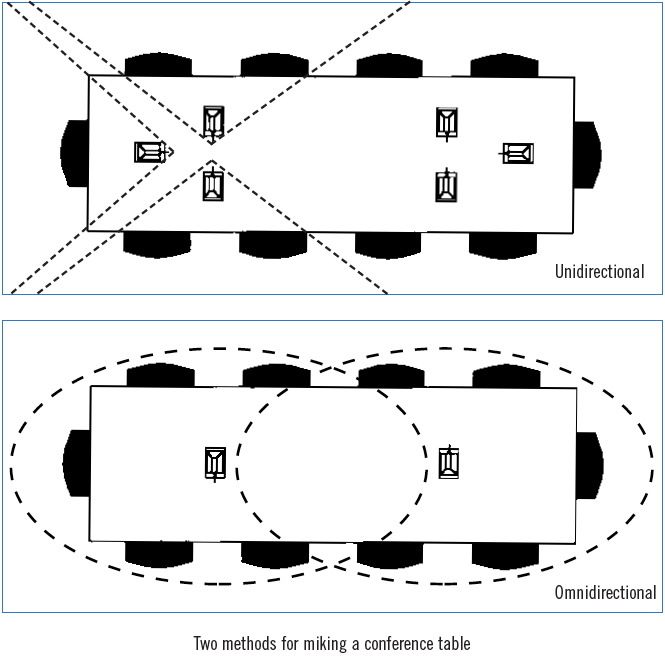
Picking up audience questions is a perennial problem for audio people, primarily because there is no really effective way to do it.
For their comments to be intelligible, you have two choices: bring the audience to a microphone, or bring a microphone to the audience.
In other words, you could place a mic on a stand somewhere in the room and ask people to move to that location if they have a comment. Or, you could assign a person (or persons) the task of walking around the room with a wireless mic and going to each person who has a question.
You may be wondering about pointing a shotgun mic at each person to pick up their questions, however, this doesn’t work very well.
Shotgun mics are not very effective beyond 20 feet in a large crowded room, which means you will only be able to understand those people in the front row.
Situation #4 — The Conference Table Shot:
Your main goal in this situation is to videotape a meeting of eight people seated around a rectangular conference table. You might think that the obvious solution would be to put a lavalier microphone on each person, but this arrangement would pick up tremendous amounts of room noise if all eight mics were left on at once.
Having an engineer bring each mic up and down as needed would probably prove unsatisfactory, as the flow of conversation might move too fast for the operator to keep up. Your best bet here is to use two omnidirectional surface mount microphones, located so that one mic is centered on each half of the table.
Each person should be approximately the same distance from the nearest microphone.
Otherwise, levels will be inconsistent and some speakers will not be picked up as well as others. If available, a shotgun mic on a boom is also a viable option, although this method would make it difficult to pick up more than one person at a time.
Hopefully you’ve found some new information in these hints. Just remember if you encounter difficulties that the basics transfer across all disciplines of audio, so troubleshooting should be a breeze.
Supplied by Shure Incorporated. For more information visit Shure.com.

